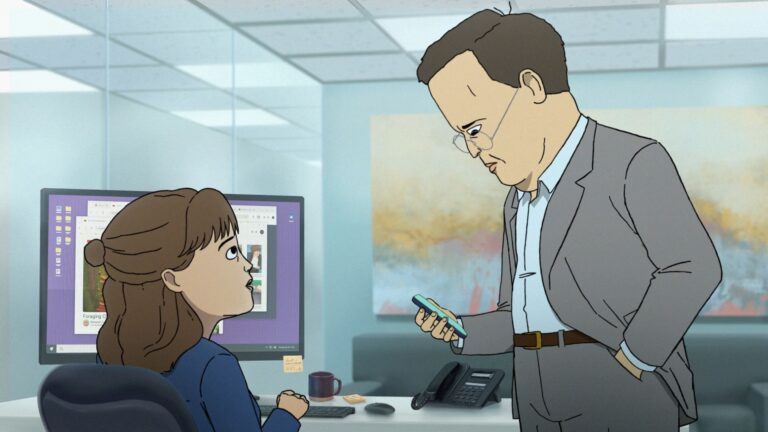Ever notice how the music in “Common Side Effects” sneaks up and swings the mood like a wrecking ball? You’re just chilling on your couch, gripped by a clinical trial gone haywire, when suddenly an ominous synth creeps in, tinged with something oddly playful. Boom! You’re hooked, and on edge. That’s Nicolas Snyder working his magic — crafting soundtracks that grab you by the ears and refuse to let go. Let’s peel back the sonic layers and see what makes this show’s score a thing of bizarre beauty.

Nicolas Snyder: A Composer Who’s Seen (and Heard) Everything
Talk about not taking the straight path! Nicolas Snyder, before scoring surreal TV soundtracks, dipped his toes into filmmaking, audio design, and — wait for it — woodworking. Clearly, he collects interests and skills the way some people hoard records. Maybe that’s why his music never feels stock or stale.
When he landed the gig for “Common Side Effects,” he brought along a resume already peppered with boundary-blurring work, like the cult-hit “Scavengers Reign.” There, Snyder pieced together jittery sounds and haunting atmospheres, proving he could build a world with his ears first and hands second. He’s not your run-of-the-mill piano guy. And oh, the “Common Side Effects” production team must have known they’d struck gold.
The Sonic Blueprint: How Snyder Takes CSE to “Uncanny” Town
So, how does Snyder do it? First, he dives straight into the DNA of CSE. He doesn’t just watch a rough cut and noodle on a synth. Instead, he absorbs the scripts. Every weird twist, every sudden joke, every anxiety attack on screen — he’s right there, soaking it up. That’s his launching pad.
But then things get wild. Snyder assembles a score that’s an anxious fever dream one minute, and a sly wink the next. He mixes together ambient soundscapes and quirky, sometimes almost laughing melodies. And he never lets you, the viewer, get too comfortable. This music keeps you guessing, nudging you from suspense into humor and back again, often in the same breath.
Into the Toolbag: Snyder’s Wild Array of Sounds
Not many composers would think, “you know what this scene needs? Tree branches!” Yet, that’s classic Nicolas Snyder. His composing toolbox looks more like an adventurer’s gear kit.
Here’s what he’s packing:
- Field Recordings: The man doesn’t just use studio samples. He walks around with a portable recorder, snapping up bits of real-world sound. Think branches cracking, footsteps in mud, wind funneling through pipes.
- “Thups”: Snyder regularly plucks twigs for these — sharp percussive hits, chunky and organic. They’re not just for show; they pepper whole tracks with earthy, human rhythm.
- Synthesizers: Sure, he loves analog and digital synths as much as the next composer, but Snyder twists, bends, and warps these sounds until they squirm alive — and a little nervous.
Lots of composers use synths. Few really dig in and make them feel this weirdly biological. So, each track could start off feeling familiar and then, all at once, grow into something twisty and brand new.
Concocting Ambiance: With a Splash of Oddball Humor
The tone of “Common Side Effects” walks a tightrope. One misstep, and the show could tilt into pure horror or just farce. Snyder’s score nails that balance. He takes cues from nature — literally — but then folds in the DNA of experimental film composers and cult classics. The result: cues that can cradle you with soft chimes one moment and then, not-so-gently, poke at your nerves with stuttering, off-kilter rhythms.
Picture this: soothing chords drift in, layered with chirping insects. Then, right as a scientific revelation hits the main cast, the music bends itself into a minor key and grows teeth. That’s no accident. Snyder’s ability to move between moods, and to inject a subtle humor right when things get tense, is what makes CSE’s funhouse so unpredictable and alive.
April 2025: The Soundtrack Drops (and So Do Fans’ Jaws)
By the spring of 2025, even the folks who’d only caught a couple of episodes were buzzing about the music. Milan Records answered their prayers with the official “Common Side Effects” soundtrack. This wasn’t your average TV album. We’re talking 24 tracks, each steeped in the strange brew Snyder cooks up.
Let’s talk tracklist — because each one tells a story all its own:
- “Common Side Effects Theme” rolls out first, setting a haunting, bone-chilling stage in just over a minute.
- “Blue Angel” (feat. Odeya Nini) drops next, and those vocals? Crisp, ethereal, shimmering with anxiety. Nini’s voice lingers long after the music fades.
- “Sick World” (feat. Anya Lagman) swoons and sways, but there’s always something under the surface, like a current of dread hiding underneath velvet.
This album doesn’t just mimic the show. It’s like an alternate way to experience CSE’s world: headphones on, eyes closed, the mind racing along with synthetic pulses and forest sounds.
Critics Cheer, Fans Remix, Social Media Loses Its Mind
Word travels fast in the scoring world, and critics like those at Film Music Reporter didn’t hold back. They called Snyder’s score a “rare originality.” Not your garden-variety review.
On social media, things went full circus. TikTok creators snipped out percussion breaks — those twiggy “thups”—and mashed them with scenes from the show. Suddenly, Snyder’s rhythms had a life beyond the TV, spinning in viral dances and meme-worthy remixes.
Meanwhile, fans on Reddit and Twitter held full-blown detective sessions, breaking down snippets from each episode. Which cue underscored Sophia’s big lab meltdown? And wait, that haunting vocal in the pilot — was it a synth, or a mystery instrument? Snyder’s soundtrack inspired hours of speculation and, frankly, a whole new type of fan engagement.
What Tracks Actually Shine Brightest? Let’s Get Nerdy
Some scores blend into the background. Not this one. Ask around, and you’ll hear the same titles pop up:
- “Clinical Trial”: Opens cold, sterile, almost surgical. But then — surprise!—the synths sneak in, lush and swirling. Suddenly, you’re not sure whether to laugh or squirm.
- “Side Effect”: Crowds love this one for its hybrid of jagged string stabs and distant ghostly hums. It’s basically the series’ jittery spirit, pressed into three minutes of audio.
- “Unknown Variables”: Here comes Odeya Nini again, layering her echoey vocals over fragile little piano chimes. The effect is part lullaby, part warning siren.
Each of these highlights a different side of Snyder’s style. One moment he’s channeling paranoia, the next, he’s letting a soft melody give the audience room to breathe.
Not Just Background Noise: Snyder’s Music as Character
Let’s not sugarcoat it. “Common Side Effects” would pack a punch no matter what, thanks to wild storylines and sharp writing. But with Snyder’s score, the whole show feels, well — fatter, wobblier, dangerously alive. Every moment of tension or slapstick comedy owes something to his hybrid sound palette.
Here’s how it works: during silent, close-up shots, Snyder sneaks in barely-there field recordings. Maybe it’s ticking, or a low drone. As the tension builds, those sounds climb, linking the viewer’s nerves directly to the scene. Or, during a well-timed joke, a janky synth melody cuts the heaviness, dragging the scene back into the absurd.
Sometimes, the only thing separating a chilling sequence from dark comedy is the score’s nudge to the audience — yes, you can laugh, it’s okay to laugh here. That’s the Snyder advantage.
Soundtrack in Real Life: Fans Can’t Get Enough
And let’s not forget, this music doesn’t retire when the credits roll. Milan Records poured real love into the album. Fans, ever the detectives, streamed favorite tracks, dissected lyrics, and even built playlists for their own late-night experiments (or just weird Tuesday afternoons).
Online forums routinely light up with questions — what branch did Snyder snap for that “thup”? Is that drum loop in episode four made from someone’s pantry collection? With that sort of engagement, it’s clear that for many, the soundtrack is more than an accessory. It’s a lifestyle, a conversation starter, and maybe, sometimes, a comfort when CSE’s plot takes a dive into chaos.
Where Next for Sonic Mayhem?
So, what’s left? “Common Side Effects” will keep twisting and turning, and you can bet Nicolas Snyder is already cooking up something new for its next round. If his track record means anything, it’ll be another unpredictable, pulse-quickening ride. That’s just the way we like it: music that lifts, pokes, prods, and, above all, never lets you go.
The next time you hit play on CSE, do yourself a favor. Don’t just watch. Listen. There’s a world inside the music, wild, witty, and just a little bit dangerous — exactly how this funhouse should feel.




